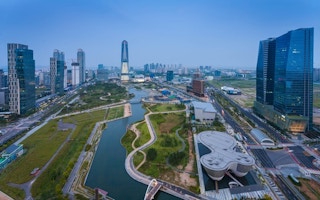Efficient, healthy cities are competitive cities. Traffic flow, clean water and air, effective emergency and health services, outstanding education: These are the drivers that allow cities to attract more citizens, businesses and tourists and continue to thrive.
With the increasing focus on improving quality of life in this era of rapid urbanization in Asia and overcrowding in cities, what can cities do to stay ahead?
Today, governments are finding ways to build surprising new capabilities with less, using technology and data. With a little ingenuity and focused goals, most cities can build sustainable, intelligent technology solutions with the power to reduce costs, improve the city’s services and enhance its citizens’ quality of life.
According to Microsoft-sponsored research from IDC, government organisations worldwide stand to gain US$206 billion in value from data over the next four years by connecting data streams, using new analytics tools, delivering insights to more people, and what’s more, doing it quickly.
Most cities can begin building value from technology today for less than they think. Every situation is unique, but nearly any city can make considerable progress beginning with three key principles:
Start with one priority area
Cities that are successful begin by using data to tackle a very specific issue. Maybe it’s improving public safety. Maybe it’s driving better use of resources such as water and electricity.
Municipal governments should look at those scenarios and find out where it makes sense to start based on the city’s circumstances, priorities and capacity. From there, build a plan and a structure to focus on a specific area with specific goals. In our work with cities, we typically advise them to look at eight key areas:
- Buildings and infrastructure
- Education
- Energy and water
- Government administration
- Health and social
- Public safety and justice
- Tourism and recreation
- Transportation
Apply data and analytics to processes and resources
There is a lot of data out there today, and cities struggle with finding the right data to build something useful. The possibilities are almost limitless, but there is a method to identifying areas where data can be harnessed.
Start with the actual, real-world process, facility or resource and think about how better data can augment what’s already there. Mobile devices and sensors can be used in a variety of ways to collect or distribute data from the field.
Using cloud services and analytics together can enable cities to process and identify patterns in data, and define thresholds that trigger machine or human intervention — these are basic frameworks that cities can apply to solve a variety of challenges and inefficiencies.
The city of Songdo in South Korea has sensors to monitor temperature, energy use and traffic flow which, when combined with analytics, can improve rider satisfaction and reduce fuel consumption. Other cities are using an approach based on light and motion sensors to make streetlights smarter so they respond to conditions year round with just the right amount of light — saving millions in energy costs.
Weather information, social media and sensors in roads have shown benefits for managing traffic. If it’s education, think about devices and software that can empower educators and create efficiency in schools. If it’s public safety, connecting mobile devices and social media to emergency call centers can create a more powerful, coordinated response to emergencies. There’s almost no limit to what you can do, so be creative.
For example, the New Zealand police use a collaboration platform and a social media monitoring tool to enhance situational awareness and deliver real-time intelligence. In Singapore, residents can are able to check an app for real-time updates on flash floods and road situations during downpours.
Make sure data and technologies all speak the same language
We’re listing this last, but it’s actually No. 1. If the city’s traffic sensors can’t communicate with its back-end servers, that data remains in gridlock. If a valuable database is sitting in a back room somewhere and no one has access to it, it’s a tree falling in the woods. To make data useful, it has to be usable.
There are four main trends in technology that can begin enabling a city to reap big benefits: Cloud, mobile and embedded devices, social media, and analytics. The only way to really unify all of these technologies is through a proven platform that works cohesively from end to end using open standards.
Cities should look for a secure cloud platform, powerful and modern analytics software, familiar productivity tools and technologies that can work with the same data from the moment it is collected by sensors or mobile devices, all the way to desktop, laptop and tablet computers in use by city employees.
Once these three principles are in place, nearly any city can begin its transformation to become a “smart city” of the future. The success of a single, well-defined and carefully managed data initiative can carry forward as a city grows more ambitious in its vision.
Stefan Sjöström is the vice-president for public sector, Asia at Microsoft.









